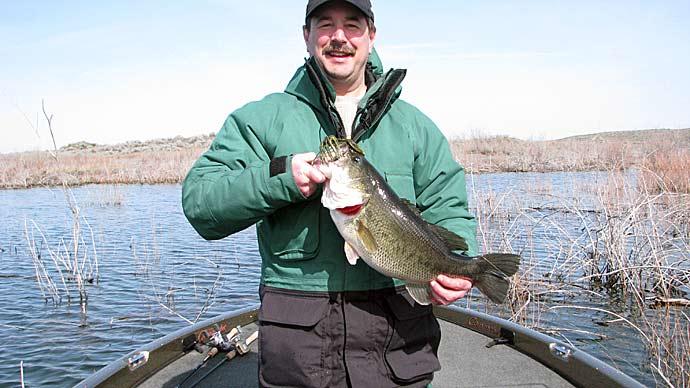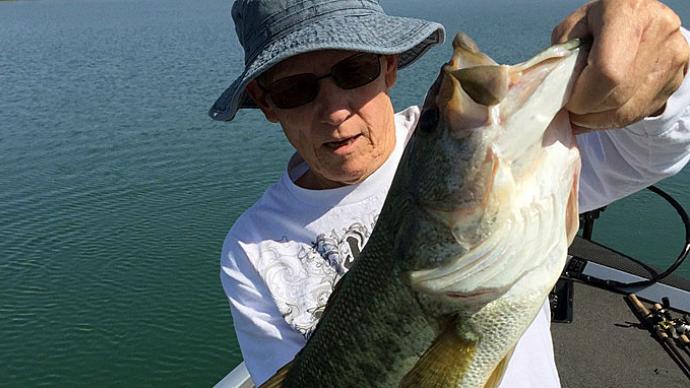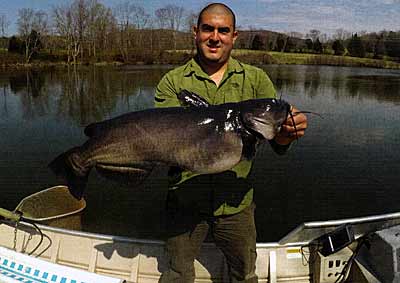
It never gets old to hear the excitement as land-owners share stories of catching their personal best Largemouth bass, or when they broke the lake record. The dream of owning a trophy fishery and then maintaining its status over many years is common, but rarely occurs due to the effort, foresight, and discipline required. One mistake can critically impact a fishery's trajectory, but in most cases, people lack the awareness or knowledge to avoid making them.
After all, we don't know what we don't know.
Consistently producing trophy fish requires successful management strategies season after season. To do this, pondmeisters must understand ways they are likely to fail. Making assumptions is one of the most common causes. For starters, avoid the trap of assuming your fishery is on track. Just because trophy fisheries take time to develop does not mean that your fishery is developing. Just because you have a trophy fishery, and your management strategies worked up to this point, it does not necessarily follow that doing the same thing year after year will lead to continued success. The more year classes of bass in your fishery, the more challenging the fishery becomes to manage.
Instead of waiting to find out if you're on track, break long-term goals into six-month goals and set expectations accordingly. This is typically done by setting growth and abundance objectives for both predator and prey species, and then comparing electrofishing results to what was projected. Remember, a fishery is dynamic, ever changing, and influenced by everything from weather to outside predators, as well as who eats who under water. Electrofishing every six months allows a pond manager to respond to changes quickly and thoughtfully, rather than react later. Solid sampling and data analysis also help to ensure a better understanding of the positive (or lack of positive) impact your management strategies are having. If sampling twice annually is outside of your budget, electrofish once per year, and then use regular creel data to fill in the gaps. Also consider implementing management strategies such as supplemental forage fish stocking to tip the scales in your favor, because food is a big limiting factor in sustaining a trophy fishery.
Obviously then, we need data. A few common assumptions made by people lacking data include: assuming you know why your Largemouth bass are not growing, assuming you will continue to grow big bass simply because you currently have a generation or two, or leaning on past experiences and assuming the fishery will respond the same way.
Rarely do people have enough recruitment, growth, and mortality data to avoid making mistakes. It is critical that the data set provides a complete picture of what is going on with both your forage fish and predator fish. For predator fish, you also should understand how old your big fish are, and if there are gaps in year classes that span greater than 24 months. Ask yourself whether or not each year class is growing at the target rate you expect, etc. Electrofishing is, by far, the best way to obtain this data.
When armed with accurate recruitment, growth, and mortality data, you begin to form a better strategy that further reduces the number of mistakes made. For example, once you know how many bass you need to harvest (if any), you can harvest them quickly. As the growth data comes in, you start to realize ways to speed up that growth. Most fisheries take too long to harvest intermediate size bass each year. It's human nature to not harvest fish when the lake most needs it. When possible, try hitting your annual selective harvest goal before your bass finish spawning. This strategy allows you to establish a bass population that has significantly more female than male bass by simply removing all male fish that you catch. When done successfully for several years, you will find that recruitment drops, the need to harvest bass annually is greatly reduced, and the condition of your bass improves. Big fish eat big meals, including smaller bass, which assists with culling. Like all management strategies, the ones you choose should align with your data.
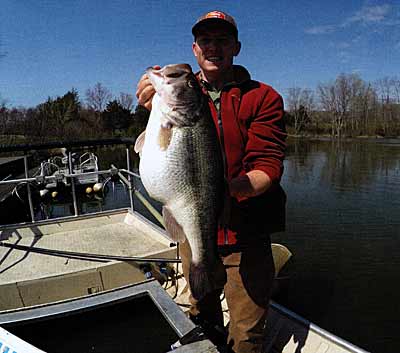
Even with a good management strategy, it is common to see fisheries with bass catch rates that are simply too high to maximize bass growth. Angler catch rates of 2-4 fish per hour is too many—unless it is a feed trained fishery. Although many great fisheries have high catch rates, data shows that strategically increasing harvest rates in those systems has a noticeable impact on bass growth while having a negligible impact on catch rates—if you are selective about the fish you harvest. A common mistake is to decide prematurely that you are content with your trophy fishery. Don't let a fear of slower catch rates keep you from knowing how great your fishery could become.
Another common, and oftentimes overlooked, area of focus is on the forage base. Most fisheries either lack enough cover for forage fish, or they have forage fish that are the incorrect size at the wrong time to maximize bass growth. Maintaining the correct forage size classes can be one of the more difficult things to do. In many cases, people make the mistake of letting the forage base become depleted before restocking them, or stocking forage fish before they harvest intermediate-sized bass. Remember, it takes about ten pounds of forage fish for a predator fish to gain a pound.
When it comes to producing forage fish, mistakes are made each year on nearly all trophy fisheries. Failing to maintain a productive plankton bloom throughout the growing season is something that has a direct impact on abundance of forage fish. Most people believe they have a productive plankton bloom, and nearly immediately dismiss the need to focus on this. It is important to understand that green, productive looking water does not indicate the water is actually productive. Using currently available strategies, the best approach is to monitor the plankton bloom and water quality, and then manipulate the bloom and water quality as undesired species of algae exceed the threshold set by your fisheries biologist. You can use meters to aid in this process, but identifying the algae under a microscope is highly advisable. If you need assistance here, seek it.
In many cases, people add phosphorus-based fertilizer to waterbodies to grow plankton, without knowing if their pond actually needs phosphorus. Phytoplankton require nitrogen, phosphorus, carbon, oxygen, and micronutrients to thrive, but with too much phosphorus, phytoplankton become outcompeted by more evolved blue-green algae, which thrives in phosphorus-rich environments. As a result, many fisheries are plagued with blue-green algae blooms and managers do not even know it. To avoid this common mistake, check your water quality to determine if phosphorus is needed.
Likely the most common mistake observed are trophy fishery owners who fail to recognize that a failed management plan can still turn out well, and give up. As a result, these owners never realize how much better their fishery could have been if they had taken a more effective route. Catching one lake record bass doesn't necessarily mean your lake is teeming with them. Fully capitalizing on opportunities to grow trophy fish is incredibly difficult to accomplish and typically requires involvement of a fisheries biologist who has the aptitude as well as an invested interest in the fishery's success. Knowing when good could have been great takes a level of understanding that not all fisheries biologists possess. When you learn to see management through the lens of true potential, your attention to detail improves and the odds of success multiplies, allowing your failures to be less significant. Unfortunately, few people possess the awareness of what is truly possible.
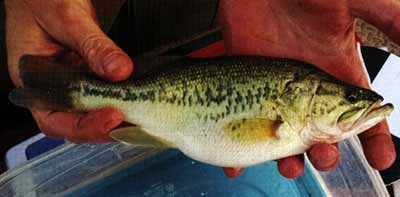
A common related mistake is failing to recognize that it is not what you know that usually causes a fishery to struggle, it is what you don't know or an event that you do not foresee. The most significant unforeseen events tend to be related to Mother Nature. Issues such as floods, droughts, weather related dissolved oxygen crashes, otters, cormorants, and other types of poachers eventually threaten all trophy fisheries. To stay ahead of Mother Nature, you need to routinely monitor the waterbody and take a preventative approach when possible.
This next mistake is something that you often only get the chance to do right once. Resetting a fishery and starting over is one of the most powerful and influential things you can do to propel a fishery towards trophy status. That said, it is common for people to miss out on the opportunity due to the emotional attachment they have towards the fish, or because they are so committed to the existing fishery due to the amount of money they have invested.
It's hard to unpickle an older, unbalanced fishery and turn it into a trophy lake.
There's a common rookie mistake in managing fisheries reliant on feeders as a primary source of productivity—a feeder that isn't functioning for two prime weeks of the growing season can be equivalent to a six percent reduction in growth of any species relying on the feed. This will have a negative immediate impact if it occurs, and will have a significant impact if it occurs annually. Like most management failures, it is very difficult to see the tangible loss, resulting in people not taking this seriously. Keep your feeders full and operational.
Making mistakes is inevitable. The list continues with items such as failing to record creel data, over-handling prized fish, over-estimating how many big fish are present, not aerating in situations where aeration would benefit, etc. So, if you are one who wants to live out the dream of having a trophy fishery that carries on over the years with legacy status, understand that the odds are not in your favor and that you must be intentional in your approaches. Remember this—it's not natural to manage for big numbers of trophy fish. That means you are bucking nature and need every advantage you can get. Start by collecting the right data, and then bring together the right team of people to overcome the obstacles that lie ahead. With proper effort, foresight, and discipline, you can establish a fishery capable of strengthening bonds amongst family and friends in a way that few in life are privileged enough to experience.
David Beasley is a Fisheries Biologist and the Director of Fisheries at SOLitude Lake Management, an environmental firm providing sustainable lake, pond, wetland, and fisheries management services. Learn more about this topic at www.solitudelake-management.com /knowledge.
Reprinted with permission from Pond Boss Magazine

